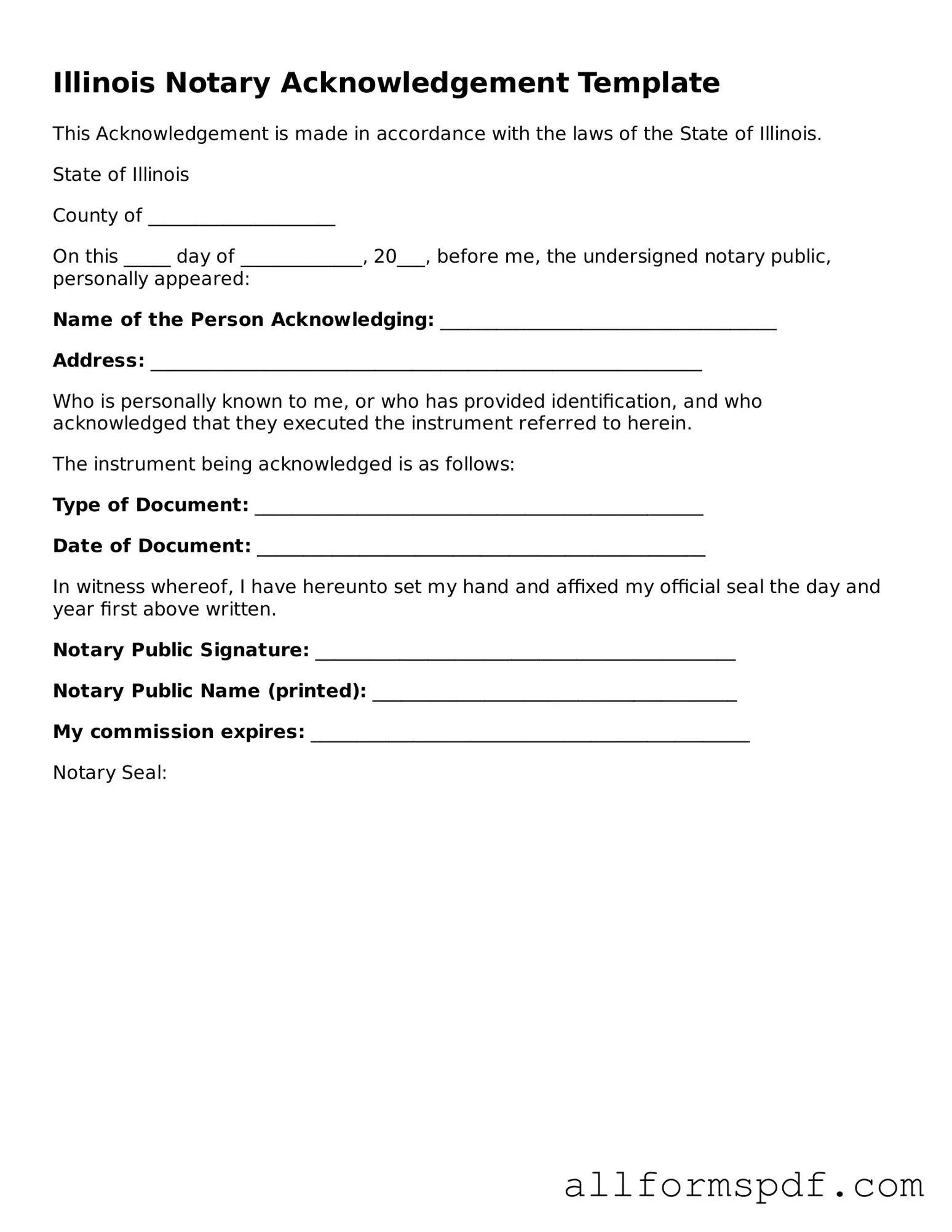Filling out the Illinois Notary Acknowledgement form requires careful attention to detail. Many people make common mistakes that can lead to delays or even invalidate the document. One frequent error is failing to include the correct date. It is essential to provide the exact date when the acknowledgment is performed. Omitting or incorrectly entering this information can create complications down the line.
Another common mistake is neglecting to sign the form. The notary must sign the document to validate the acknowledgment. Without this signature, the form lacks authenticity and may not be accepted by the intended parties. Additionally, some individuals forget to include their official seal. The seal is a critical component that confirms the notary's authority and the legitimacy of the acknowledgment.
Incorrectly identifying the signer is also a prevalent issue. The name on the form must match the identification presented by the signer. Any discrepancies can raise questions about the validity of the acknowledgment. Furthermore, notaries sometimes fail to record the type of identification used. This information is crucial for verifying the identity of the signer and should always be included.
People often overlook the importance of completing all required fields. Leaving any section blank can result in the form being rejected. Each part of the acknowledgment serves a purpose and should be filled out accurately. Similarly, notaries may forget to include their commission expiration date. This date indicates how long the notary's authority is valid and is necessary for the form's acceptance.
Another mistake involves using outdated forms. Notary laws and requirements can change, so it is vital to ensure that the most current version of the acknowledgment form is being used. Using an outdated form can lead to legal complications. Additionally, some notaries do not verify the signer's understanding of the document. Ensuring that the signer comprehends what they are acknowledging is critical to the process.
People sometimes fail to witness the signing in person. The notary must be present when the signer acknowledges the document. If the notary is not physically present, the acknowledgment is not valid. Lastly, some individuals do not keep proper records of their notarial acts. Maintaining a log of all acknowledgments is essential for accountability and compliance with Illinois law.
